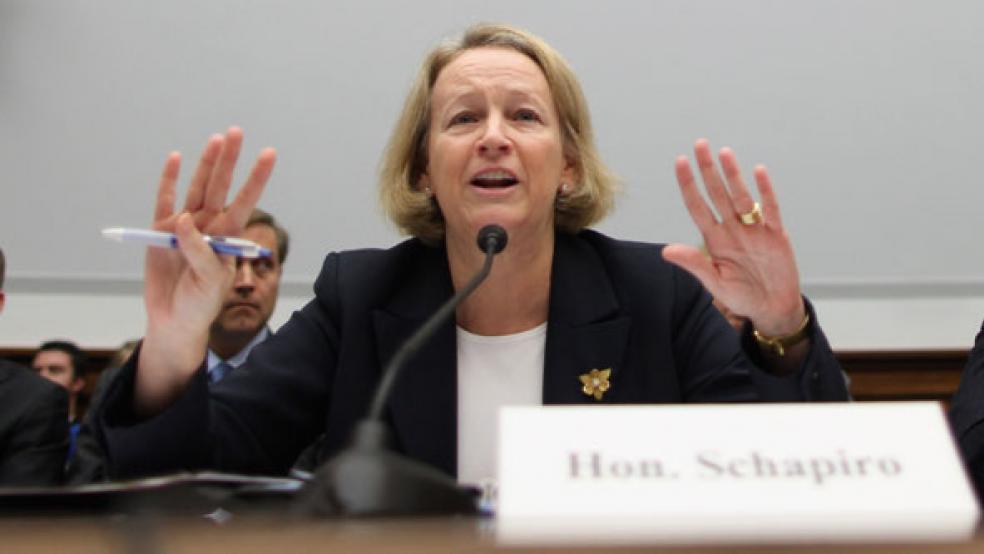It has become clear in recent days that two much-debated Wall Street reforms – the Volcker Rule and restrictions on high frequency trading – may never occur, at least not in any truly effective way, all in the interest of preserving market liquidity.
In other words, they may be sacrificed for no good reason.
Liquidity -- the extent to which banks, brokerages, trading firms and their clients have enough cash on hand to buy or sell a stock, bond or other security without driving the price higher or lower -- is a good thing. It makes markets function smoothly, encourages people to trade and enables companies to raise funds at lower costs. But what price are we willing to pay for liquidity?
That’s the question that dominates the current debate over the much-criticized Volcker Rule, one of the solutions to rein in Wall Street’s excesses. The new regulation was supposed to ban banks that rely on some kind of government guarantee from getting into the business of trading for their own accounts – proprietary or “prop” trading – as well as limiting their ability to invest in hedge funds and private equity partnerships. These approaches to making money are riskier and not core to the bank’s main purpose within the financial system.
But when it came time to draft specific provisions and implement the rule, it turns out that the grey area is so vast – and the lobbying efforts of the banks that would be affected are so great – that it resulted in a massive 530-page bill that ProPublica’s Jesse Eisinger memorably described as a “monstrosity of hopeless complexity and vagueness.” The reason for the monstrosity? Wall Street and the financial industry’s supporters in Congress are worried that a tried-and-true source of profits will be yanked away from banks at a time of tremendous uncertainty for them. Their stated reason for making the Volcker Rule a toothless wonder? Why, it’s all in the name of market liquidity.
The fact is that the market-making activities that they point to – and that they fear a more rigid or straightforward Volcker Rule would ban – aren’t activities that big financial institutions are required to do. They choose to do them because they are lucrative – buying stock from clients, warehousing it and then re-selling it to other clients down the road. Ask a banker about it and you’ll get a raft of reasons why this is a valuable service.
That may be true, but it’s a service that doesn’t need to be offered by big Wall Street institutions of the too-big-to-fail variety. If it’s a valuable service, someone else will fill the breach and provide it. There are already plenty of candidates, including market-making firms that specialize in prop trading. Restricting Goldman Sachs (GS) or JP Morgan (JPM) from staying in the business would certainly hurt them, but it’s far from a given that it would have any impact on market liquidity, much less Main Street’s ability to access financial markets.
Trading on Steroids
Liquidity also isn’t all it’s cracked up to be. It tends to evaporate whenever investors most need it as we all saw far too clearly during the height of the financial crisis. This brings us to the second hot topic in regulatory circles these days: the issue of high frequency trading.
In a breakfast meeting earlier this week, SEC chair Mary Schapiro again voiced her concern about the impact of these players on the SEC’s job of ensuring that financial markets function in a legal and orderly manner. True, when markets are moving smoothly, there’s no question that high-frequency traders contribute to liquidity. And the industry is squawking loudly that any restriction on their ability to trade as much as they want, whenever and however they want, would take a toll on that liquidity.
Schapiro has mentioned the prospect of imposing fees on canceled trades, which she says make up about 90 percent of all orders (a process known as “quote stuffing”) as one way of getting the high-frequency folks to hit the pause button. The shift to computerized trading has had major consequences for investors of all kinds; investing for the long-term returns associated with a company’s improving fundamentals almost sounds passé these days. Certainly, at least some of the liquidity these new players provide is faux liquidity, and vanishes when it’s most needed (like those canceled trades).
Take the “Flash Crash” of May 2010 as a case in point. In only minutes, the stock market lost 9 percent of its value, only to rebound. In the midst of the mayhem, the only liquidity that the high-frequency folks provided, an SEC report later concluded, was the kind that drove share prices lower. Moreover, their role in the markets caused other investors who really do provide liquidity during a typical trading day to bolt for the sidelines until they could figure out what was happening.
It makes sense that the SEC and other agencies responsible for monitoring the financial markets, would want to ensure that those markets are liquid. But the first order of business should be to find a way to distinguish “good liquidity” from “bad liquidity,” the latter being the kind that evaporates on demand or that creates systemic risks that the financial markets can’t sustain.
It also makes sense for regulators to think hard about the unintended consequences of their rule-making – it’s certainly possible that cracking down on high-frequency traders or the Volcker rule could cause markets to become more volatile or act in ways that we can’t even anticipate today. (Shades of Donald Rumsfeld’s “unknown unknowns”…) But let’s hope that the combination of the complexity of the task and the forceful way in which myriad groups are touting the virtues of the great god of liquidity don’t prompt market overseers to avoid asking the tough questions.






